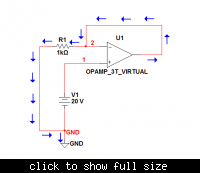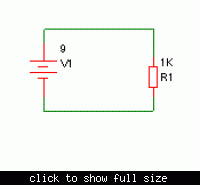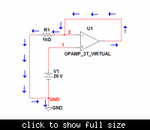hamzahumayun
Newbie level 4

Hi,
While reading Microelectronics Circuits by Sedra Smith i had the following query
the formula we get for non inverting op amp is 1 + R2/R1, now to turn it into voltage follower it suggests that make R2= 0 and R1 = infinite, i was wondering if R2 = 0 is sufficient and we could keep R1 in the circuit and it should still be a voltage follower, would it work?
Regards,
Hamza
While reading Microelectronics Circuits by Sedra Smith i had the following query
the formula we get for non inverting op amp is 1 + R2/R1, now to turn it into voltage follower it suggests that make R2= 0 and R1 = infinite, i was wondering if R2 = 0 is sufficient and we could keep R1 in the circuit and it should still be a voltage follower, would it work?
Regards,
Hamza

![Circuit1 - Multisim - [Circuit1 ]_2012-06-24_17-27-07.png Circuit1 - Multisim - [Circuit1 ]_2012-06-24_17-27-07.png](https://www.edaboard.com/data/attachments/21/21133-362f7552b2ac95d2c653f4dd4fa9368e.jpg)
![Circuit1 - Multisim - [Circuit1 ]_2012-06-24_17-26-40.png Circuit1 - Multisim - [Circuit1 ]_2012-06-24_17-26-40.png](https://www.edaboard.com/data/attachments/21/21134-cf18f40a93026b12c7e98e10c9297c1d.jpg)







